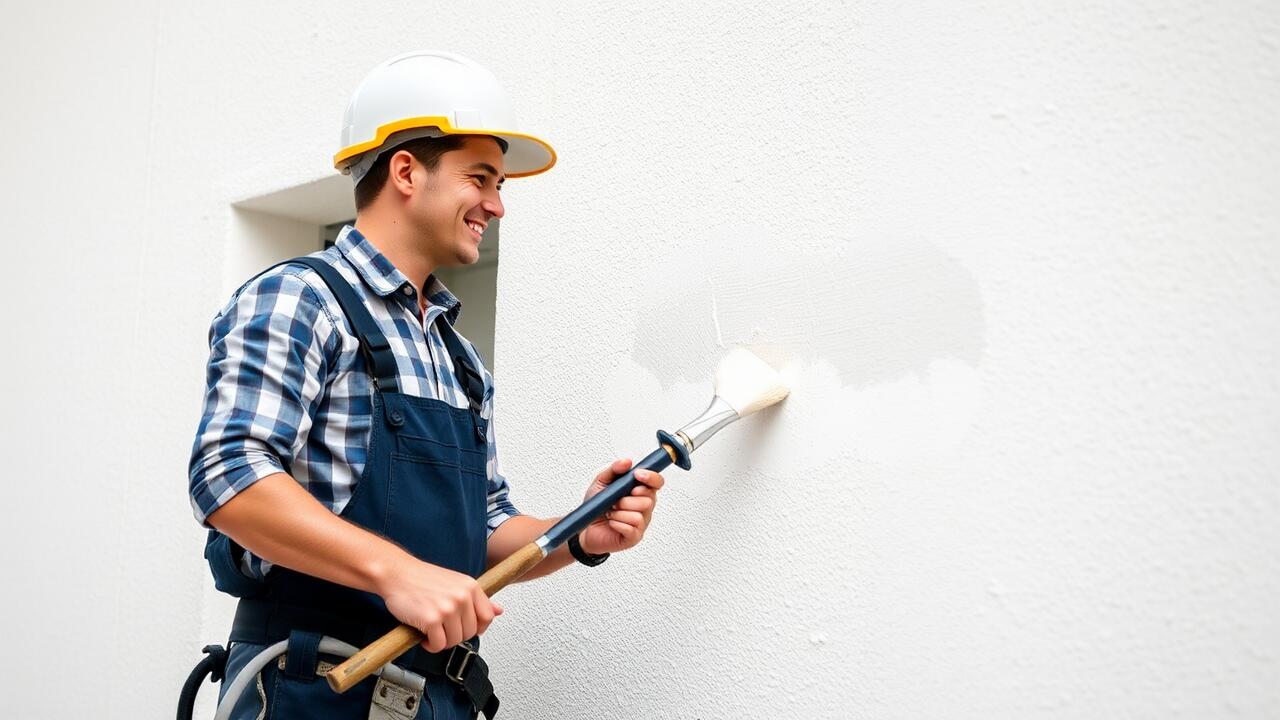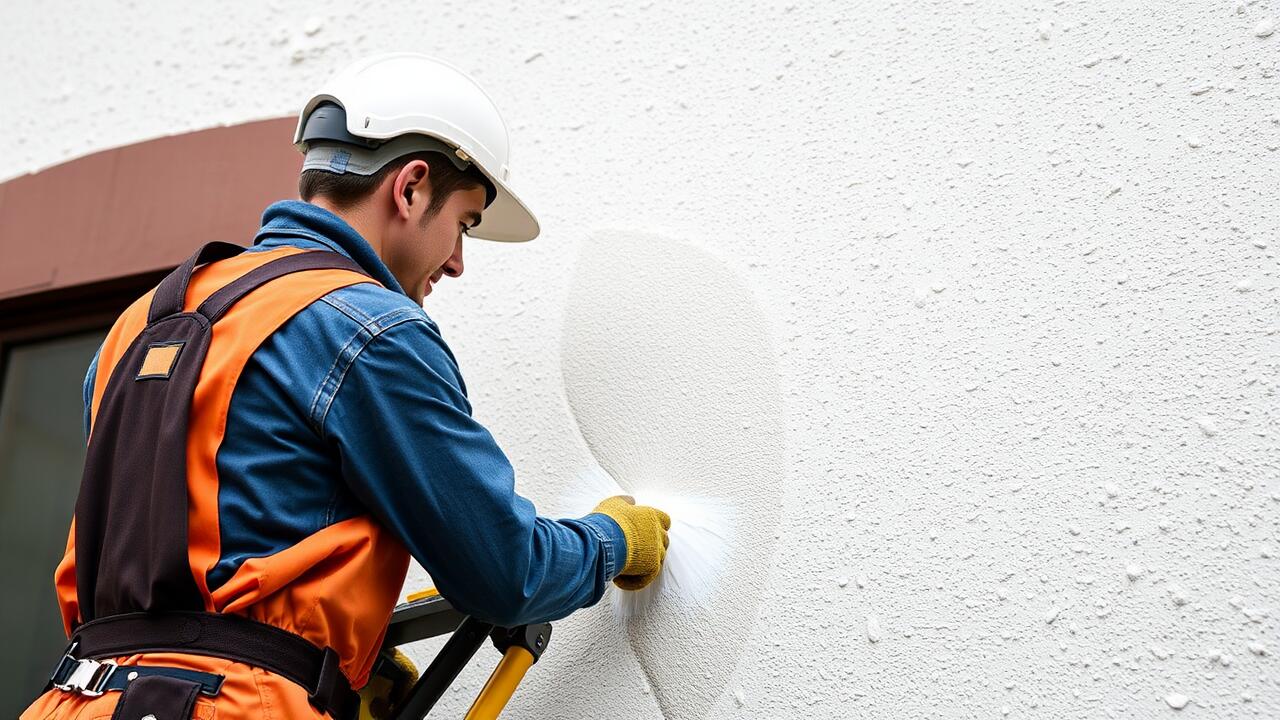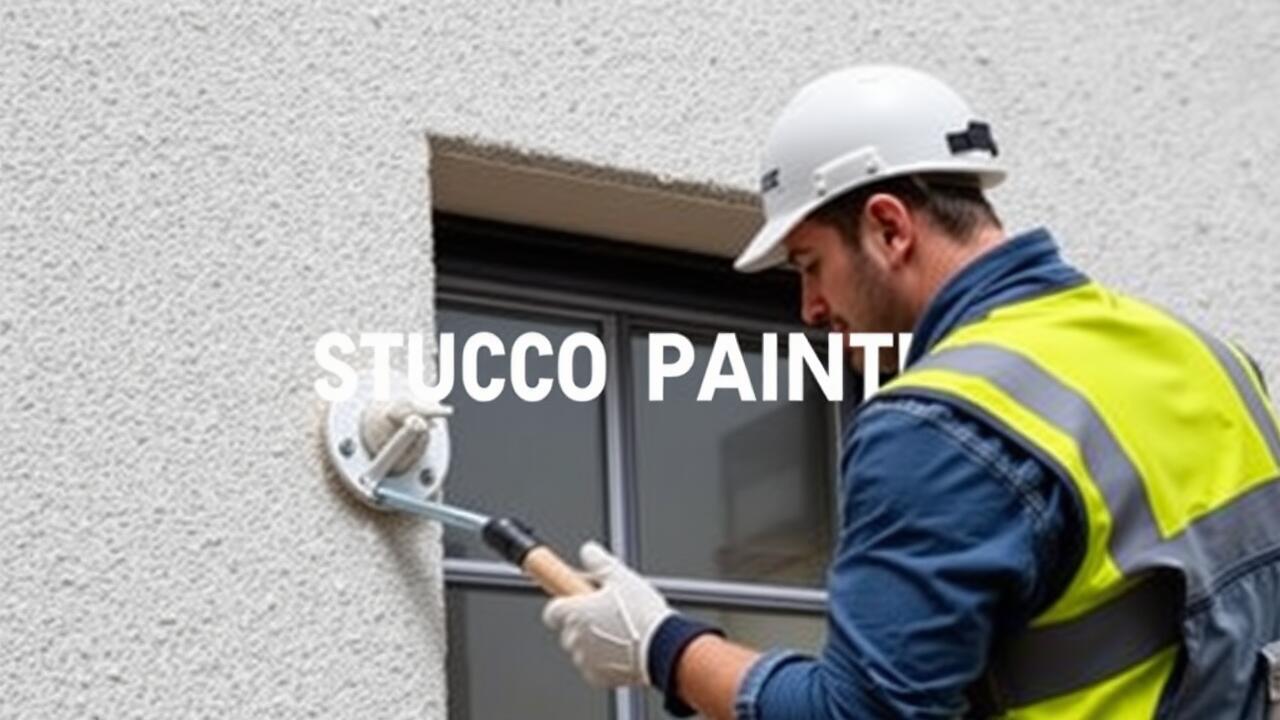
Types of Primers Suitable for Stucco
When selecting a primer for stucco, it is crucial to consider options that cater specifically to the unique texture and porosity of the surface. Acrylic primers are commonly recommended due to their versatility and ability to create a strong bond with stucco. They provide excellent adhesion while allowing for moisture to escape, preventing potential damage over time. In regions like Palms, Los Angeles, where climate can fluctuate, using a quality acrylic primer can make a significant difference in the durability of the paint finish.
Another suitable option is elastomeric primers, which offer additional flexibility. These primers can expand and contract with the stucco surface, making them particularly effective in areas prone to temperature variations. For those engaging in Stucco Painting in Palms, Los Angeles, choosing the right primer not only enhances the paint's appearance but also contributes to the longevity of the finish. A properly primed stucco surface is less likely to develop issues like peeling or mold, providing a better overall result for any painting project.
Choosing the Right Product for Your Project
Selecting the right primer is crucial for achieving a quality finish when working with stucco. Different types of primers are formulated to adhere to the unique texture and porous nature of stucco surfaces. A high-quality acrylic primer typically works well, providing the necessary bonding and sealing properties. For projects such as stucco painting in Palms, Los Angeles, it's essential to consider the local climate and environmental conditions, as these factors can influence the performance of the primer.
Be mindful of the specific needs of your stucco surface. If the stucco has been previously painted or has stains, a primer that includes stain-blocking technology might be necessary. Additionally, choosing a primer that complements the topcoat's finish can enhance the overall aesthetic. Researching product reviews and consulting with local painting experts will guide you in selecting a primer that fits your project requirements effectively.
Preparation Steps Before Painting Stucco
Before embarking on stucco painting in Sherman Oaks, Los Angeles, proper preparation is crucial to ensure a successful outcome. Start by thoroughly cleaning the surface to remove dirt, mold, and any loose material. Use a pressure washer or a stiff-bristled brush combined with a mild detergent solution. Allow the stucco to dry completely before proceeding to the next step. Any moisture trapped beneath the paint can lead to peeling and discoloration over time.
Next, inspect the stucco surface for cracks or damage that may need repair. Fill in any gaps with a suitable stucco repair compound to create a smooth and even surface. For optimal adhesion, lightly sand any rough areas after the repairs have dried. This attention to detail in the preparation stages can significantly impact the durability and appearance of your paint job in the long run.
Essential Practices for Optimal Results
To achieve optimal results when painting stucco, it is crucial to start with thorough surface preparation. This step involves cleaning the stucco to remove any dirt, mildew, or previous paint that could affect adhesion. Use a power washer or a stiff brush to ensure the surface is clean and adheres properly to the primer and paint. For projects like Stucco Painting in Palms, Los Angeles, paying attention to the local climate conditions is also important, as they can impact drying times and paint performance.
Selecting the right tools and techniques can further enhance the quality of the finished surface. A high-quality sprayer or roller designed for textured surfaces will help apply both primer and paint uniformly. For Stucco Painting in Palms, Los Angeles, it's also beneficial to work in suitable weather conditions, ideally choosing a dry, mild day for the best results. Taking these essential practices into account can significantly improve the longevity and appearance of the stucco finish.
Cost Implications of Not Priming Stucco
Neglecting to prime stucco before painting can lead to several financial drawbacks. Without proper priming, paint may not adhere well to the surface, leading to issues like peeling and flaking. This deterioration often results in the need for more frequent repainting, ultimately driving up costs over time. Homeowners in areas like Palms, Los Angeles, may find themselves investing more in maintenance and repairs due to premature paint failure.
Additionally, the lack of primer can create an uneven finish, necessitating additional coats of paint for coverage. This not only increases material costs but also labor expenses if professional painters are involved. For those considering stucco painting in Palms, Los Angeles, investing in a quality primer at the outset can safeguard against these potential expenses, ensuring a more durable and visually appealing result.
Analyzing Long-Term Financial Effects
Neglecting to prime stucco before painting can lead to significant long-term financial repercussions. Without a proper primer, the paint may not adhere well to the stucco surface, resulting in frequent chipping, peeling, or fading. Homeowners may find themselves needing to repaint sooner than anticipated, incurring additional costs not only for materials but also for labor. This can quickly escalate the financial burden associated with maintaining the appearance and integrity of the exterior.
In areas like Palms, Los Angeles, where the climate can be particularly harsh, the implications of skipping primer are even more pronounced. The lack of a protective base can lead to increased wear from the elements, thus diminishing the longevity of the paint job. Homeowners may ultimately face higher expenses related to surface preparation, potential repairs, and premature repainting, underscoring the importance of careful planning and consideration when investing in stucco painting in Palms, Los Angeles.
FAQS
What is the purpose of priming stucco before painting?
Priming stucco helps create a uniform surface, enhances paint adhesion, and prevents moisture issues, ensuring a longer-lasting finish.
What are the risks of painting stucco without primer?
Painting without primer can lead to peeling, flaking, and blistering of the paint, as well as potential mold and mildew growth due to moisture retention.
Can I use any type of primer on stucco?
No, it's important to choose a primer specifically designed for masonry or stucco surfaces to ensure proper adhesion and performance.
How can I prepare stucco before applying primer and paint?
Proper preparation involves cleaning the surface to remove dirt and debris, repairing any cracks, and allowing the stucco to dry completely before applying primer.
What are the financial implications of not priming stucco before painting?
Not priming can lead to frequent repainting and maintenance costs due to premature paint failure, ultimately resulting in higher long-term expenses.

